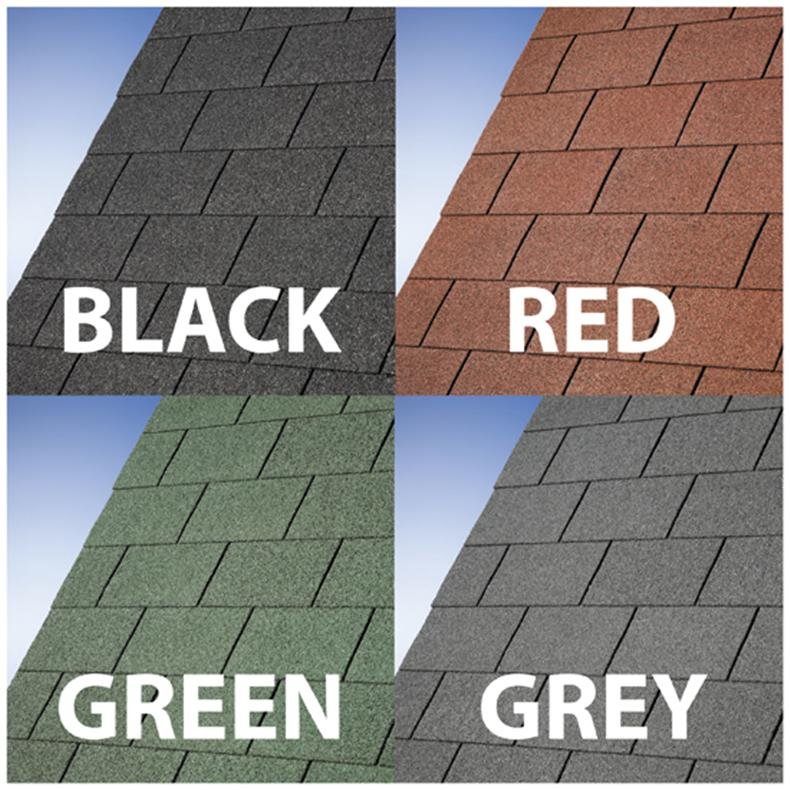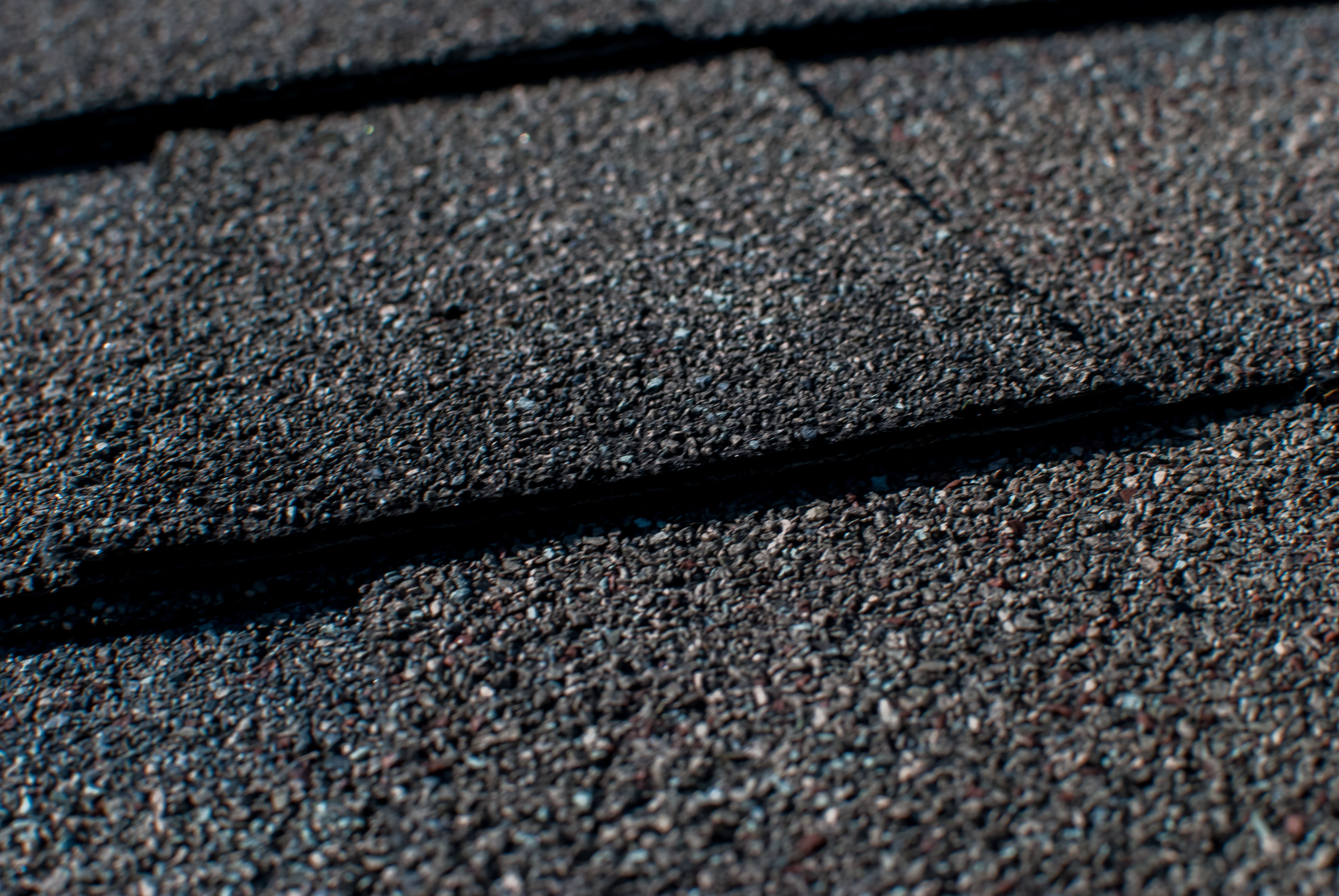Jump to:
When it comes to roofing your shed, summerhouse, or garden building, it can be a challenge to choose what to use as a roofing material.
There are two natural options to pick from, Roofing felt and Roofing shingles – but what are the benefits of each type, and which one should you use? It can’t be difficult to know the answers if you’re not familiar with garden roofing materials, so that’s why we’re here to help!
We’ll explain everything there is to know about both shed roof felt and shingles, how they compare when it comes to durability, appearance and more – and, yes, we’ll also let you know which one is best for you and your roofing project.
So for the best comparison between felt and shingles out there, keep scrolling!

Different Roofing Types
Let’s kick things off by looking at the two different roofing types that you could use – that’s Roofing felt and Roofing Shingles. We know that not everyone has had the chance to get clued up on all things roofing – so before we begin comparing and contrasting let’s quickly check out both options.
It goes without saying that both options are designed to provide great weather resistance wherever they’re used. We also stock both felt & shingles in a variety of colours to suit your style.
Let’s take a look at them both:
Roofing Felt
You’ve almost definitely seen Roofing Felt used before – whether that’s on a shed, an outdoor cabin, or a simple shelter.
Felt is sold in large rolls which simply need to be rolled out, cut to size, and then nailed onto the roof in question. It’s particularly great for dealing with awkward roof sections, roof overhangs, and for quick roof repairs. Just cut it to size and nail it in!
Roofing felt is the old reliable and we include it with all of our garden buildings that need a roofing material. Our felt has a life expectancy of 5 years, so you can rely on it to provide a reliable roof covering for over half a decade. And, despite this life expectancy, felt is amazingly cost-effective and affordable.
Roofing Shingles
In the roofing world, Shingles are the premium product. They’re designed to look like the ceramic roof tiles you might see on a house, and this design and their materials make them very robust.
Their appearance is what makes shingles unique, with their distinctive, tile-shaped pattern sure to give any garden building a classic and refined appearance.
They come in shingle strips of tiles that need to be laid and installed one by one. However, they are made of a tougher material than felt is and, unlike their roofing counterparts, are UV resistant – meaning they won’t fade after years of exposure to the sun.
However, these added benefits also make them much more expensive than felting. Their cost-effectiveness is reduced, too, as their design makes them quite unadaptable to awkward roofs. You’ll have to buy more shingles to cover the same amount of roof, and you might struggle to fit them over places like roof overhangs.

Both roofing styles have their own distinct advantages and disadvantages – but which one is better for you depends on your priorities. Let’s compare them both on a number of factors: Durability, Cost, Appearance, and Installation.
Durability & Protection
When it comes to durability, both shingles and felt do a great job. Both fittings are, of course, designed to protect the roof of your structure and last a long time doing that too.
But there are also some advantages and disadvantages that you might not want to overlook when choosing between the two. When it comes to the lifespan of the roofing materials, you’ll find that in general Shingles have a longer lifespan than Felt.
Our felt has an expected lifespan of around five years and good weather resistance against water and rain. But our shingles have a higher degree of protection against the elements. Shingles are able to easily withstand snow, ice, strong winds above 100mph, and even desert heat.

But the best part about shingles is their UV protection. They can stand up to the sunlight all day long for years without becoming faded and worn. Felt can’t boast to have the same resistance – meaning it’ll eventually become faded by the UV rays.
For durability, roof shingles have the advantage of a longer lifespan and better overall resistance to the elements.
Appearance
Roofing felt and shingles both have their distinct appearances, and while you might appreciate one more than the other, we’re pretty confident that most of us like the refined appearance of shingles more.
Their tile-shaped appearance can make any garden building look like a beautifully tiled home. Using shingles will add a beautiful, traditional look to a shed or summerhouse. And, with multiple colours to choose from, you can select tiles that complement your outdoor space and home.

Now before we go any further let’s not write felt off altogether. The appearance of roofing felt has a unique look that we associate with garden buildings. Using it on a shed will look just right. And, again, with lots of colours to choose from, you can select one that compliments your garden building.
The choice is up to you, but we think you’ll agree that roofing shingles win out on looks.
Installation & Repairs
Ease of installation and repairs vary between the two roofing materials, and this is mostly down to the format of the materials.
When installing roofing felt, you’ll be measuring the felt to fit the roof, cutting it to size with a knife, then felting the roof section-by-section with the awkward areas and overhangs last. It’s a straightforward process and the best thing about felt is that the flexibility of the materials means it can easily deal with roof overhangs and corners.
Repairs and patch-ups are easy, too. Simply cut out a right-sized felt patch and nail it in!
Shingles require a more careful and intricate installation. You’ll have to install strips of shingles one by one, taking care to stagger each strip to create a tiled pattern. When it comes to overhangs, it might require some skilful engineering to find a way to cover the overlap while still making the shingles look good.
So to make things clear: roof felt is easier to install than shingles.

Cost-Effectiveness & Affordability
If you’re looking for affordability and cost-effectiveness in your roofing material for a garden building, then you’ll definitely want to pay attention to this next and final section.
Straight out the bat, let’s hit this issue on the head: Roof felt is far cheaper than shingles.
When it comes to buying a roofing material that’s cheap, you’ll want to opt for felt. Felt might not have the durability of shingles, but this means that the materials are much more affordable for customers.
But cost-effectiveness isn’t the same as cost. If you’re looking for the product with the best value-for-money, then it’s a very close call. Shingles are more expensive, but for that extra price you’re getting extra protection and a more attractive finish. However, these advantages mean they’re more laborious to install.
On the other hand, felt is much cheaper and also a breeze to install. But you won’t get that same durability or the quality of finish that shingles have. Unless you value one of these qualities above the other, you can see that it’s close. But it’s important to remember that, for affordability, felt is cheaper than shingles.
The Comparison
Okay, so how do they compare? Well, it does depend on whether or not you’ve got certain priorities.
If you prefer durability, choose Shingles.
If you prefer easy installation & repairs, choose Felt.
If you prefer appearance, choose Shingles.
If you prefer affordability, choose Felt.
But what about an overall comparison? Is one definitively better than the other?
At Garden Buildings Direct, we’re big fans of quality. We like quality products at accessible prices. While they’re a little bit more expensive, the quality that Shingles provide with their durability and great appearance means that they’re just as cost-effective as Felt and provide a better experience overall.
If you want our opinion, Roofing Shingles are the better option.

The Roundup
So our opinion is that shingles win out – although don’t hesitate to buy felt if you prefer its advantages. Whichever one you choose, felt or shingles, you’ll have a roofing product that will stand up to the elements and protect your garden building for years to come.
If you need to give your building a new roof, it’s also worth noting what is pent vs apex.






